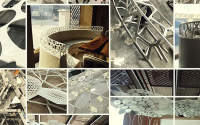Key Considerations For Office Interior Design
Designing an office interior involves more than just choosing furniture and colors. It requires careful planning and consideration of various factors to create a workspace that improves productivity, promotes well-being, and reflects your company’s culture. Explore here key considerations to keep in mind when looking for interior office fit out:
Understand your brand and culture:
The office design should align with your brand identity and corporate culture. Consider your company’s values, mission, and image. A tech startup may opt for a modern, open-plan layout to nurture collaboration and innovation, while a law firm might prefer a more traditional and formal setting. The design should reinforce your brand’s message and resonate with employees and visitors alike.
Functionality and workflow:
Efficient workflow is vital for productivity. Analyze how different departments operate and interact within the office. Design the layout to facilitate smooth workflow and minimize unnecessary movement. Place essential facilities like meeting rooms, break areas, and collaboration zones strategically to optimize efficiency.
Employee comfort and well-being:
Consider employee comfort to improve job satisfaction and reduce stress. Consider ergonomic furniture that supports posture and minimizes strain. Ensure adequate lighting to reduce eye strain and fatigue. Incorporate elements of biophilic design, such as plants and natural materials, to improve mood and overall well-being. Proper ventilation and temperature control are also essential for a comfortable work environment.
Flexibility and adaptability:
Design your office space with flexibility in mind. Business needs evolve, so create a layout that can easily accommodate changes in team size, technology, or working methods. Use modular furniture and movable partitions that allow for reconfiguration as needed. This adaptability ensures that your office remains functional and relevant over time.
Technology integration:
Today’s offices rely heavily on technology. Plan for smooth integration of technology infrastructure, including power outlets, data ports, and wireless connectivity. Designate spaces for equipment like printers and scanners, and ensure that cables are managed efficiently to maintain a neat and clutter-free environment. Consider future technological advancements when planning your office layout.
Privacy and acoustics:
Balancing open collaboration with the need for privacy is vital. Designate quiet zones or enclosed offices for tasks requiring concentration or confidentiality. Use acoustic solutions such as sound-absorbing panels, carpets, and strategic placement of furniture to minimize noise and distractions. Effective acoustics contribute to a more productive and comfortable work environment.


